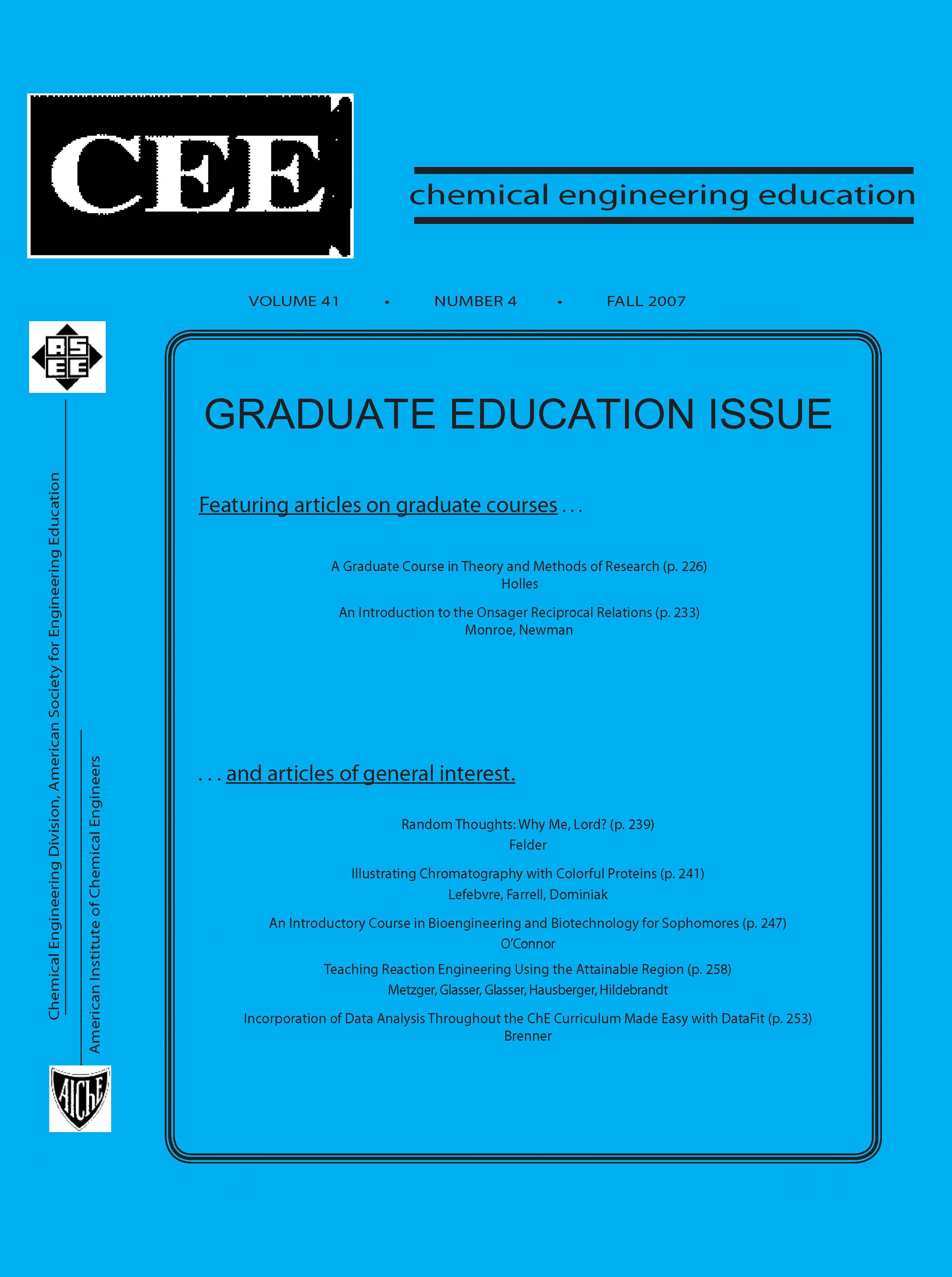Teaching Reaction Engineering Using the Attainable Region
Abstract
Ask a graduating chemical engineering student the following question: What makes one reactor different from the next? The answers received will often be unsatisfactory and will vary widely in scope. Some may cite the difference between the basic design equations, others may point out a PFR is “longer,” and still others may state that it all depends on the particular reaction network. Though these answers do possess a bit of truth, they do not capture the true difference between reactors: the degree of mixing achieved. This is the inherent difficulty with teaching chemical reaction engineering; the students learn the technical skills required to perform the calculations to determine maximum yields and shortest space-times, but very rarely are they able to grasp and thoroughly understand the theory and underlying differences between reactors.[1] Often, too much time is devoted to tedious and involved calculations to determine the correct answer on homework, instead of focusing on the concepts to enforce the benefits offered by each reactor presented. Reactor network optimization is traditionally not covered in any depth at the undergraduate level.[2-4] The way reactor network optimization is traditionally taught to graduate students often involves large numbers of coupled equations that can sometimes hide the final goal of the analysis. Attempts to simplify the situation, such as Levenspiel’s graphical anlaysis[4] do offer some benefit, however their applicability is limited, as they can readily only optimize simple reaction problems. As chemical engineers, it is desired to know the most promising solution to a real problem in the shortest amount of time, and rarely is this accomplished with the current teaching methods for reactor network optimization.


